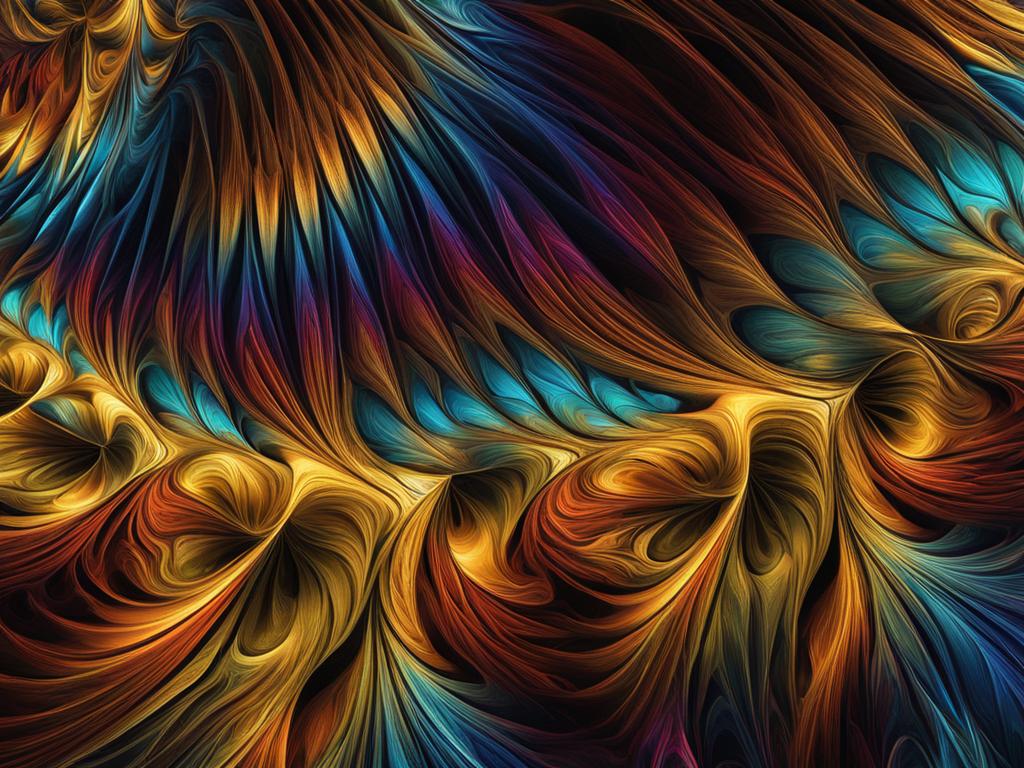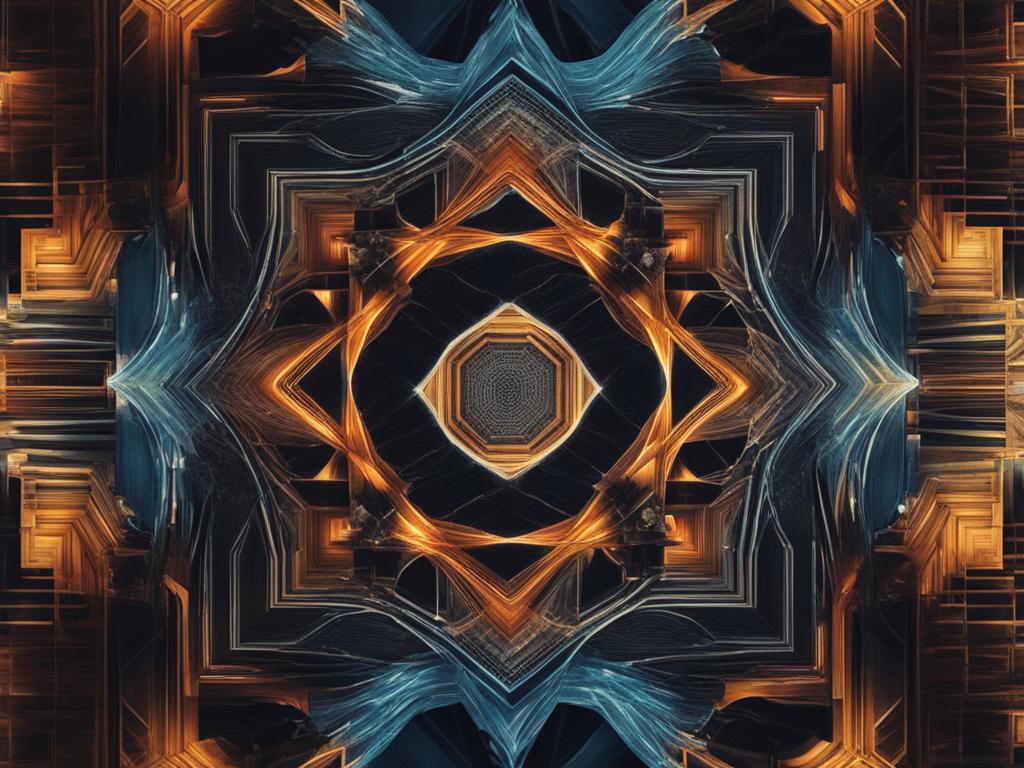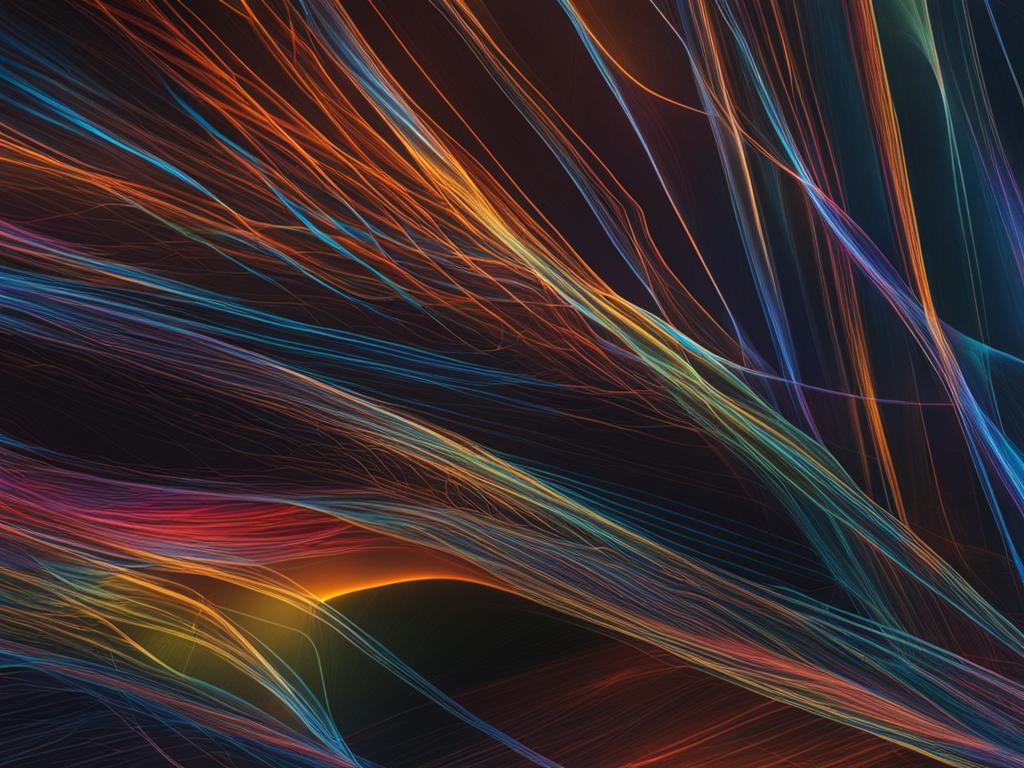At the intersection of technology and creativity lies an emerging field known as machine learning art. This discipline blends machine learning algorithms with artistic expression to create stunning pieces of visual art that challenge our perception of traditional mediums. In this article, we take a deep dive into the world of machine learning art and explore its innovative techniques, unique aesthetic, and impact on the art scene.
We will also delve into the integration of artificial intelligence (AI) in art creation and examine the emerging trends that are shaping the field. But first, let’s take a closer look at what machine learning art is and how it has evolved over the years.

The Evolution of Machine Learning Art
Machine learning art has come a long way since its inception and has undergone significant evolution concerning styles and techniques. Machine learning art 2024 looks incredibly promising as more creative possibilities emerge, merging technology and art. To dive deeper, let’s explore the various machine learning art styles and techniques that have emerged.
Machine Learning Art Styles
There are various machine learning art styles. For one, it’s worth highlighting the ‘Algorithms Generated Images (AGI) style, which trains on datasets and generates new images. Similarly, ‘Style Transfer’ utilizes a convoluted neural network to recreate images into new styles while retaining the initial content. ‘Deep Dream’ is another style that alters images to look surreal.
The beauty of Machine learning art styles is the diversity they bring. The evolution is unlike any we’ve seen before in the art world. The integration of technology and art has never been more compelling, and it continues to evolve with new and extraordinary styles emerging, making machine learning art a sector to watch out for.
Code for Machine Learning Art Styles
Code plays a vital role in machine learning art style creation and analysis. It is how artists implement the algorithms that drive the creation process in most cases. In addition, the code used could determine the final product’s quality and feel. Some artists have made their code adaptable and open-source, allowing for further experimentation and modification.
| Code Type | Description |
|---|---|
| Python | Python is widely used in machine learning projects. The machine learning libraries, such as TensorFlow, PyTorch, and Scikit-Learn, make it easier for artists to implement the algorithms. |
| Processing | Processing is an open-source programming language that artists apply in creating interactive installation art. |
| Java | Using the DeepDream code, artists apply this programming language in creating machine learning art projects with stunning output. |
Code, therefore, is an essential component, and new artists in the machine learning space often need to familiarize themselves with the code applied by industry leaders. As the industry continues to advance, new code is being created that allows for further exploration and experimentation.
In conclusion, the evolution of machine learning art over the years has been impressive, and we can expect more to come in the machine learning art 2024. Machine learning styles and techniques have no limit, and the use of code further enhances the creative process, making machine learning art an exciting field to watch out for.
Machine Learning Art and the Art Scene
Machine learning art has opened up a new world of possibilities for artists and designers. With the integration of machine learning algorithms in art creation, new job roles have emerged, creating exciting opportunities for those with a background in both art and technology. In fact, a search for “machine learning art jobs” on popular job search engines reveals numerous job openings across multiple industries.
Moreover, the impact of machine learning art extends beyond the art world, influencing design practices across various industries. The incorporation of machine learning algorithms in design creates more efficient and effective design processes, leading to innovative and striking designs. A prime example of this is the use of machine learning algorithms in website design to create personalized user experiences and seamless navigation.
The emergence of machine learning art has disrupted traditional art forms, paving the way for the integration of technology and artistic expression. As the demand for machine learning art and design continues to grow, so does the need for skilled professionals in the field.
The Integration of AI in Art Creation
The use of artificial intelligence and machine learning algorithms has transformed the way artists approach their work. AI has opened up new possibilities for creating stunning pieces of art, including AI-generated paintings. Image recognition algorithms are now capable of analyzing millions of images to detect patterns and generate new ideas.
One application of AI in art creation is the use of generative adversarial networks (GANs). GANs are composed of two neural networks that work together in a cooperative and competitive manner to create and refine images. GANs have been used to create unique, never-before-seen art pieces that challenge our perception of traditional aesthetics.
Additionally, AI has been used to assist artists in creating realistic images. For example, the Adobe Sensei AI system uses machine learning algorithms to accurately predict and interpolate missing parts of an image. This can be especially useful for artists who want to create high-quality images without spending hours on detailed work.
“AI has opened up new possibilities for creating stunning pieces of art, including AI-generated paintings.”
Innovations in Machine Learning Art
The field of machine learning art is constantly evolving with new and exciting innovations. At our studio, we are always exploring new ways to combine technology and creativity to produce stunning works of art that challenge and inspire. Here are some of the most notable machine learning art projects:
| Title | Description |
|---|---|
| AICAN | AICAN is an AI program developed by Rutgers University that creates unique art pieces by identifying patterns and creating variations on those patterns. Its artworks have been exhibited in numerous galleries and museums around the world. |
| The Next Rembrandt | In 2016, a team of data scientists, engineers, and art historians used machine learning algorithms to create a new Rembrandt painting. The project analyzed 346 paintings and generated a completely new painting in the style of the Dutch master, painting techniques, and materials he used. |
| DeepDream | DeepDream is an open-source Google project that uses deep neural networks to generate visually stunning images. By inputting a specific image, the program creates a dream-like version of the image filled with vibrant colors and unexpected patterns. |
These innovative machine learning art projects demonstrate the limitless possibilities of this dynamic field. As we continue to push the boundaries of technology and creativity, we can expect to see even more exciting developments in the world of machine learning art.

Machine Learning Art and Aesthetics
Machine learning art has revolutionized the art world with its unique style that sets it apart from traditional art styles. The incorporation of algorithms in creating visually appealing and thought-provoking pieces challenges our perception of what art can be.
One of the primary characteristics of machine learning art is its ability to blend technology and artistic expression seamlessly. This combination results in pieces that are captivating and innovative, pushing the boundaries of what is possible with traditional art methods.
Incorporating machine learning algorithms in art creation opens up a world of possibilities where an artwork can be programmed to produce infinite variations, creating one-of-a-kind pieces that would be impossible to replicate. This shift in art production has transformed the industry, striving for unique and remarkable works of art.
“Aesthetic pleasure is not to be taken lightly.” – Leon Battista Alberti
Machine Learning Art and Society
Machine learning art has far-reaching implications beyond the art world, with the potential to impact society as a whole. As such, it is important to consider the social and ethical considerations surrounding this emerging field.
One issue that arises in the context of machine learning art is copyright. As the use of algorithms and machine learning techniques becomes more widespread in the art world, questions arise about who owns the rights to AI-generated artwork. This is particularly relevant when it comes to reproducing or selling such works of art.
Another important consideration is the role of the artist in a technology-driven era. As machines become more adept at creating artwork, some argue that the human touch and creativity will become devalued. On the other hand, proponents of machine learning art argue that it provides artists with new tools and techniques to explore their creativity.
Finally, there is the issue of authenticity. With machine learning algorithms capable of producing convincing fakes, there is a concern that the art world may be flooded with AI-generated fake artworks. This raises questions about how to verify the authenticity of art and how to protect buyers from fraudulent works.
“Artificial intelligence and machine learning algorithms have the potential to revolutionize the art world, but it is important to consider the social and ethical implications of these emerging technologies.”

As machine learning art continues to evolve, it is important to address and mitigate these social and ethical considerations to ensure a bright future for both the field and society as a whole.
Emerging Trends in Machine Learning Art
As experts in the field of machine learning, we are continuously monitoring emerging trends that are shaping the future of machine learning art. The utilization of generative adversarial networks (GAN), a machine learning technique that pits two neural networks against each other, is redefining the way artists approach their work, leading to new breakthroughs in creativity and innovation. This technique is particularly powerful as it allows artists to generate realistic images with a level of control that was not previously possible. Additionally, machine learning art is now being used to create immersive experiences by leveraging virtual reality and augmented reality technologies, opening up new possibilities for creative expression.
Another trend shaping machine learning art is the use of machine learning algorithms to analyze existing artwork and generate new pieces in similar styles or themes. This method is allowing artists to streamline their creative process by receiving automatic suggestions and by delivering new ideas that would not have been considered before. With the growing interest in sustainability, we have seen an increasing number of artists using machine learning art to create pieces that comment on environmental issues and evoke discussions on sustainability.
Overall, the field of machine learning art is rapidly evolving, with new innovations constantly pushing the boundaries of what is possible. As algorithms continue to advance, we expect that artists will continue to leverage these technologies in innovative and thought-provoking ways.
Conclusion
In conclusion, we have explored the captivating world of machine learning art and its ability to blend technology with artistic expression. We have discovered how machine learning art has evolved over the years to encompass various styles and techniques, including the use of code to create captivating pieces.
Furthermore, we have discussed the impact of machine learning art on the art scene, including the creation of specialized job roles and its influence on design practices across various industries.
We have also delved into the integration of artificial intelligence in art creation and how AI and machine learning algorithms are used to assist artists in creating stunning pieces of art.
The innovations in machine learning art are constantly evolving, and we have showcased notable machine learning art projects that push the boundaries of creativity and technology, highlighting the endless possibilities offered by machine learning algorithms.
Machine learning art has its own unique aesthetic, and we have explored how artists use algorithms to create visually striking and thought-provoking pieces that challenge our perception of art.
However, we also addressed the social and ethical considerations surrounding machine learning art, including issues related to copyright, authenticity, and the role of the artist in a technology-driven era.
As AI and machine learning continue to evolve, we can expect to see new trends shaping the field of machine learning art. Machine learning art represents the intersection of technology and creativity, transforming the art scene in unprecedented ways.
In this exciting field, there are endless opportunities for artists, designers, and enthusiasts alike to explore the possibilities for artistic expression. Explore the captivating world of machine learning art and see what possibilities await you.
